Geometry » Solids
Cube
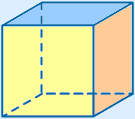
Area = 6 × s2 (s is the length of the side/edge)
Volume = s3
Cuboid
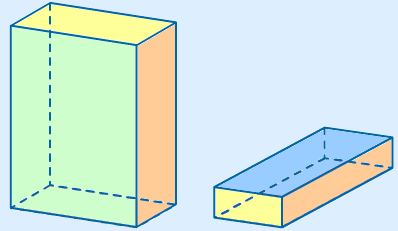
Area = 2 × (l × w + l × h + w × h)
Volume = l × w × h
Sphere
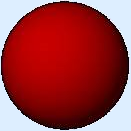
Area = 4 × π × r2
Volume = 43 × π × r3
Cone
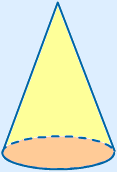
| Area cone | = | area base | + | area slanted face |
| = | π × r2 | + | π × r ×  |
| Volume = 13 × | area base | × | height |
| = 13 × | π × r2 | × | h |
Prism
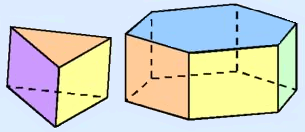
A prism consists of a polygon as a base and top. All cross-section, parallel to the base, must be identical.
Area = calculate faces separately and add them together
Volume = area base × height
Pyramid
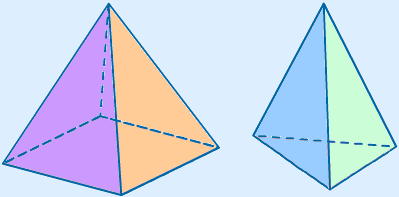
A pyramid consists of a polygon as a base and triangular slanted sides from every side of the polygon towards a common point/top.
Area = area slanted faces + area base
Volume = 13
× area base × height
Cylinder
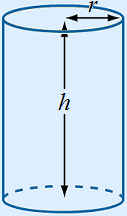
A cylinder consists of a circle or an ellipse as a base and top. All cross-sections, parallel to the base, must be identical.
Formulas for circular base
| Area = | area top and base | + | area side |
| = | 2 × area base | + | circumference base × height |
| = | 2 × π × r 2 | + | 2 × r × π × h |
| Volume = | area base | × | height |
| = | π × r 2 | × | h |
Formulas for ellipsoidal base
| Area = | area top and base | + | area side |
| = | 2 × area base | + | circumference base* × height |
| = | 2 × π × r 2 | + | π × h × h |
| Volume = | area base | × | height |
| = | π × a × b | × | h |
with a half the size of the longest axis and b half the size of the shortest axis
* The circumference formula of the ellips (circumference = π ) is not precise.
) is not precise.
A slightly more precise approximation is circumference = π(3(a + b) –  )
)
Only with a very difficult calculation (ellipsoidal integral) can the circumference of a ellips be calculated precisely.